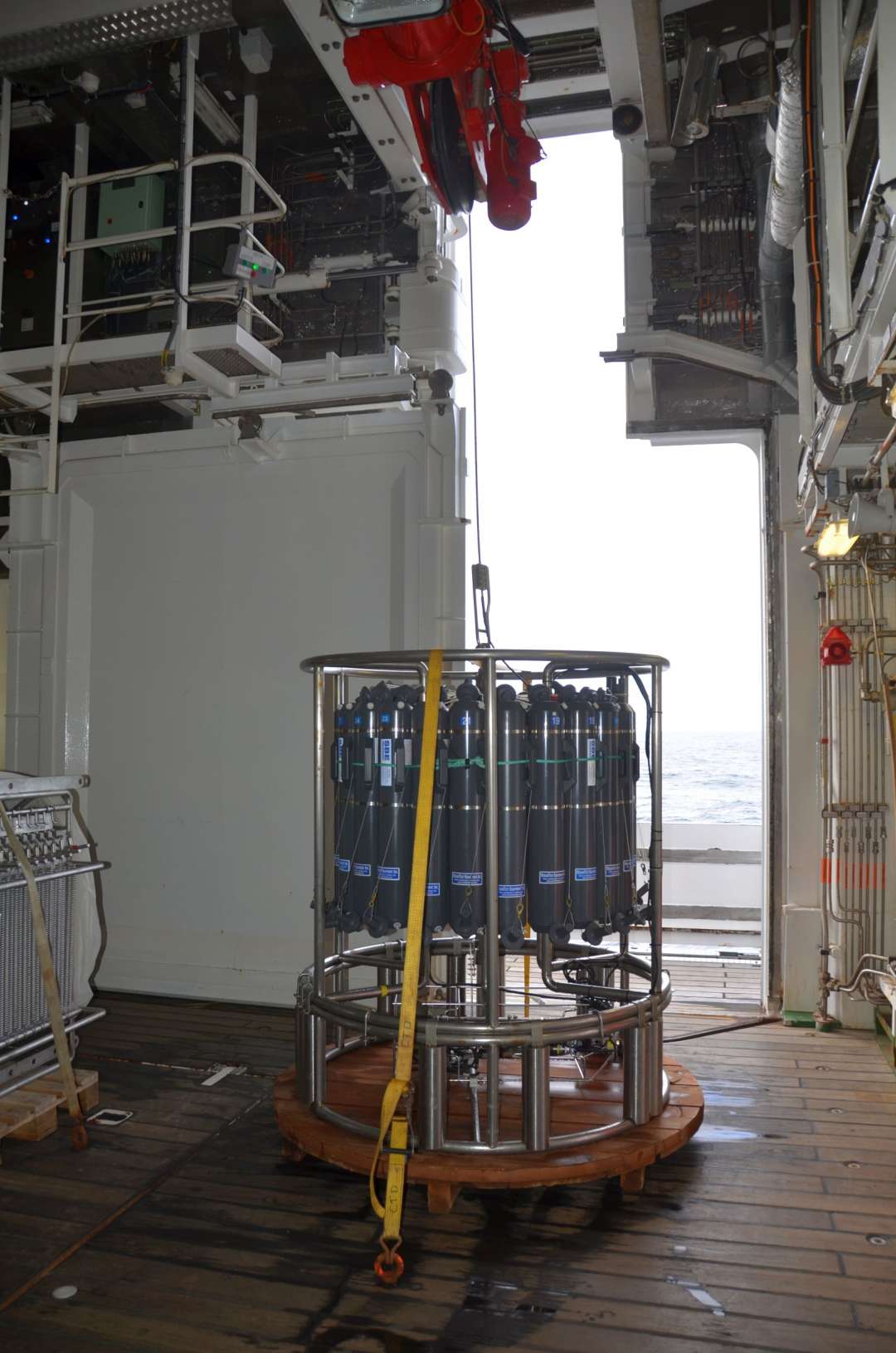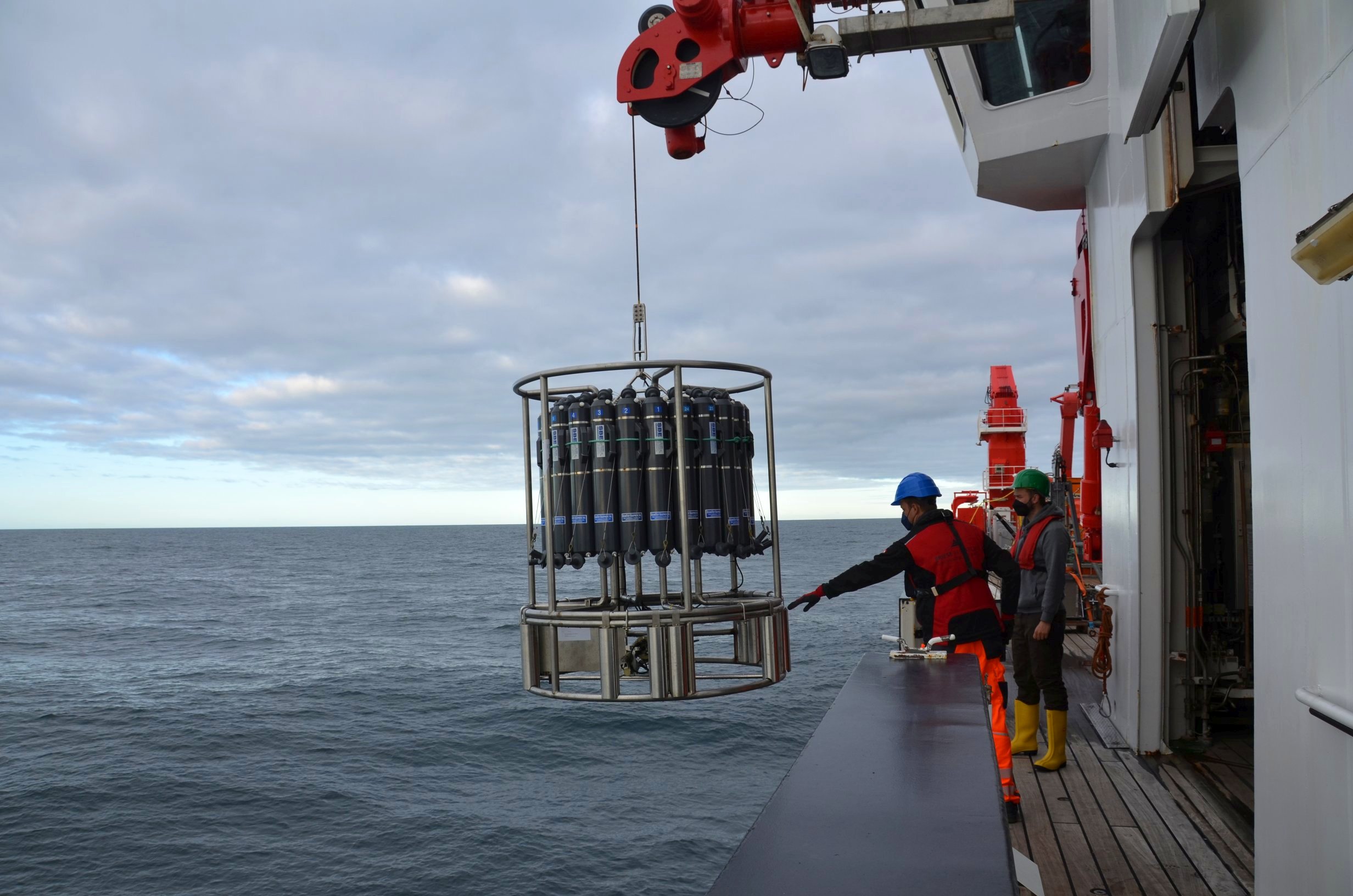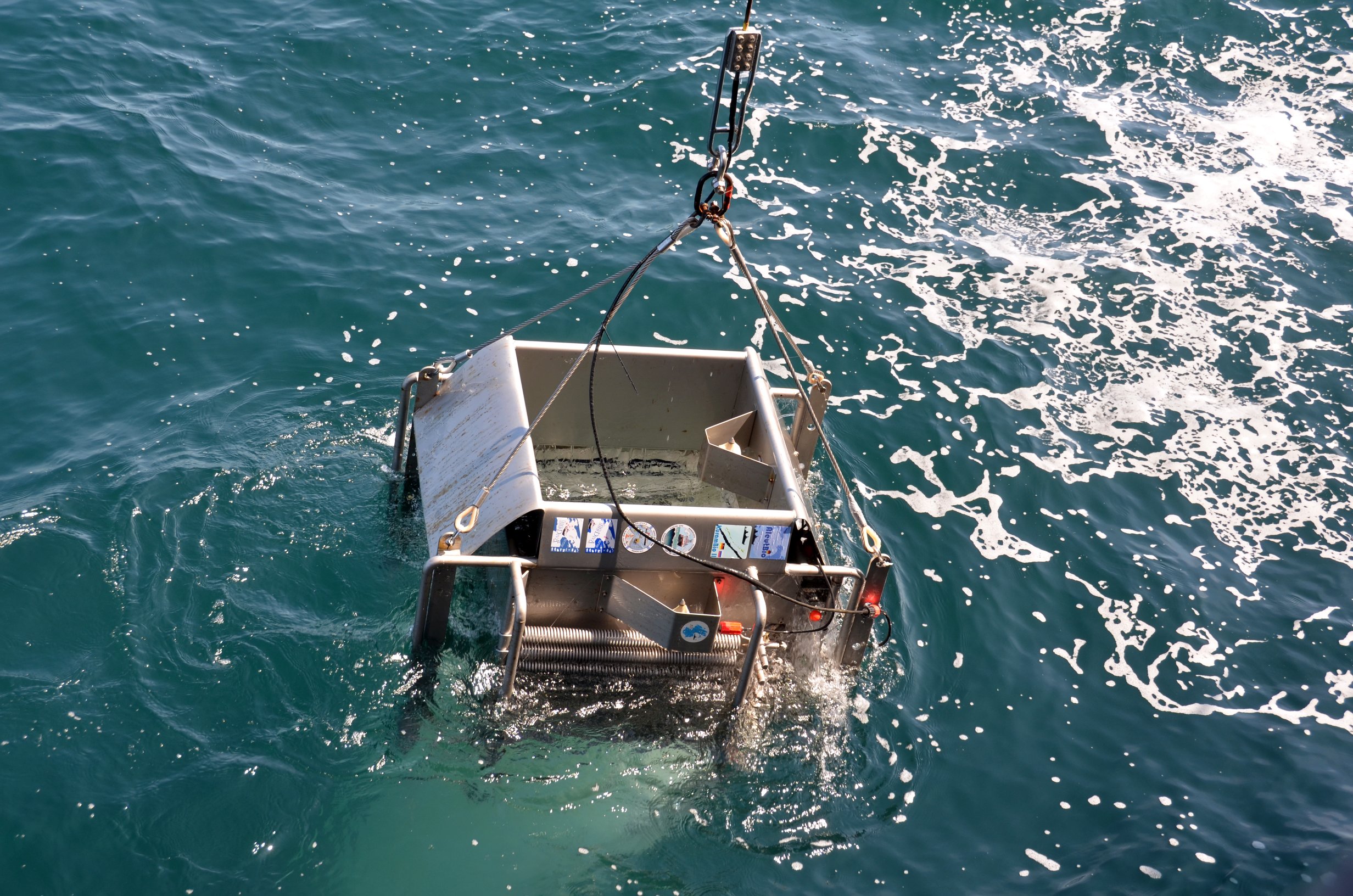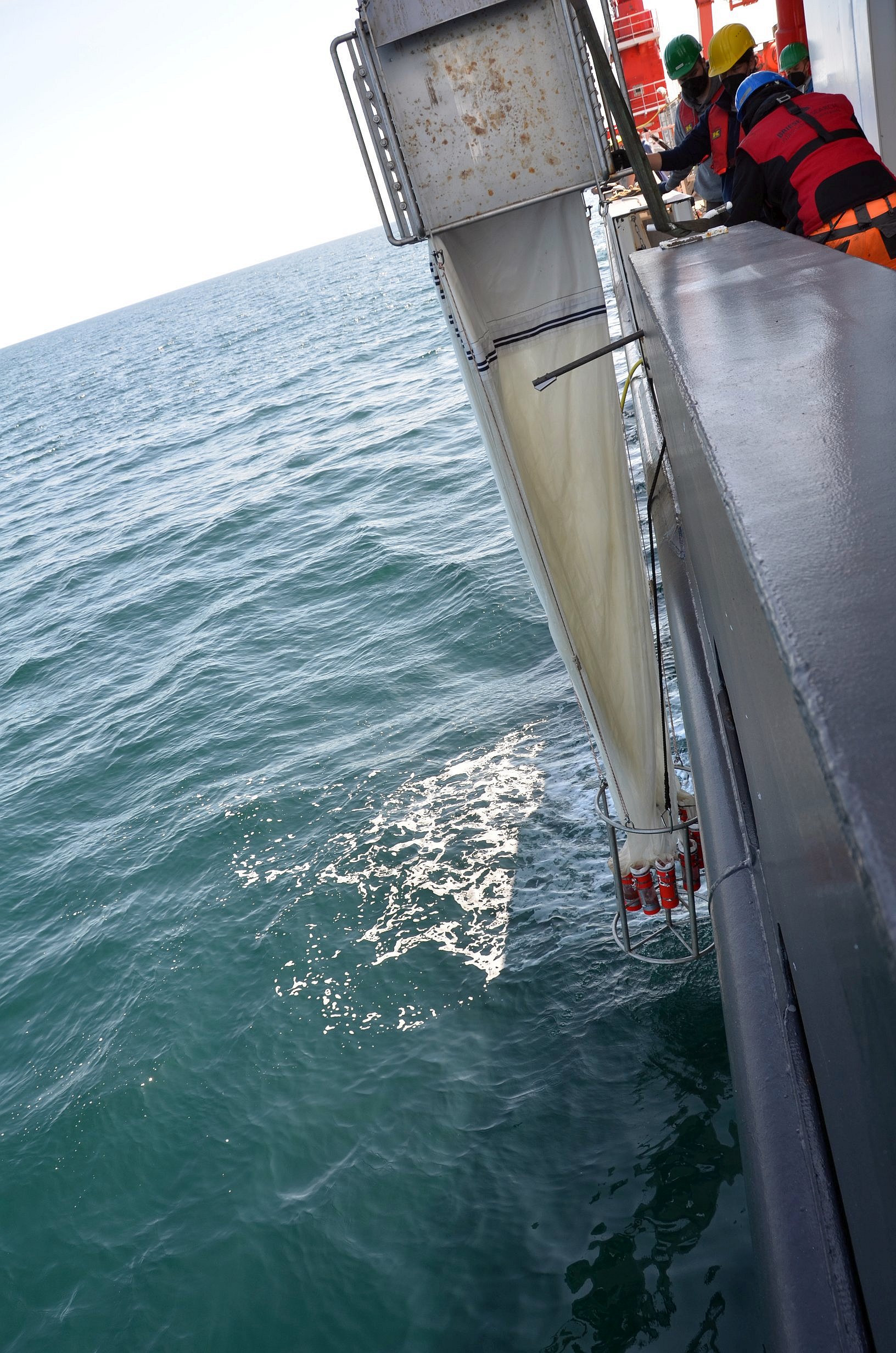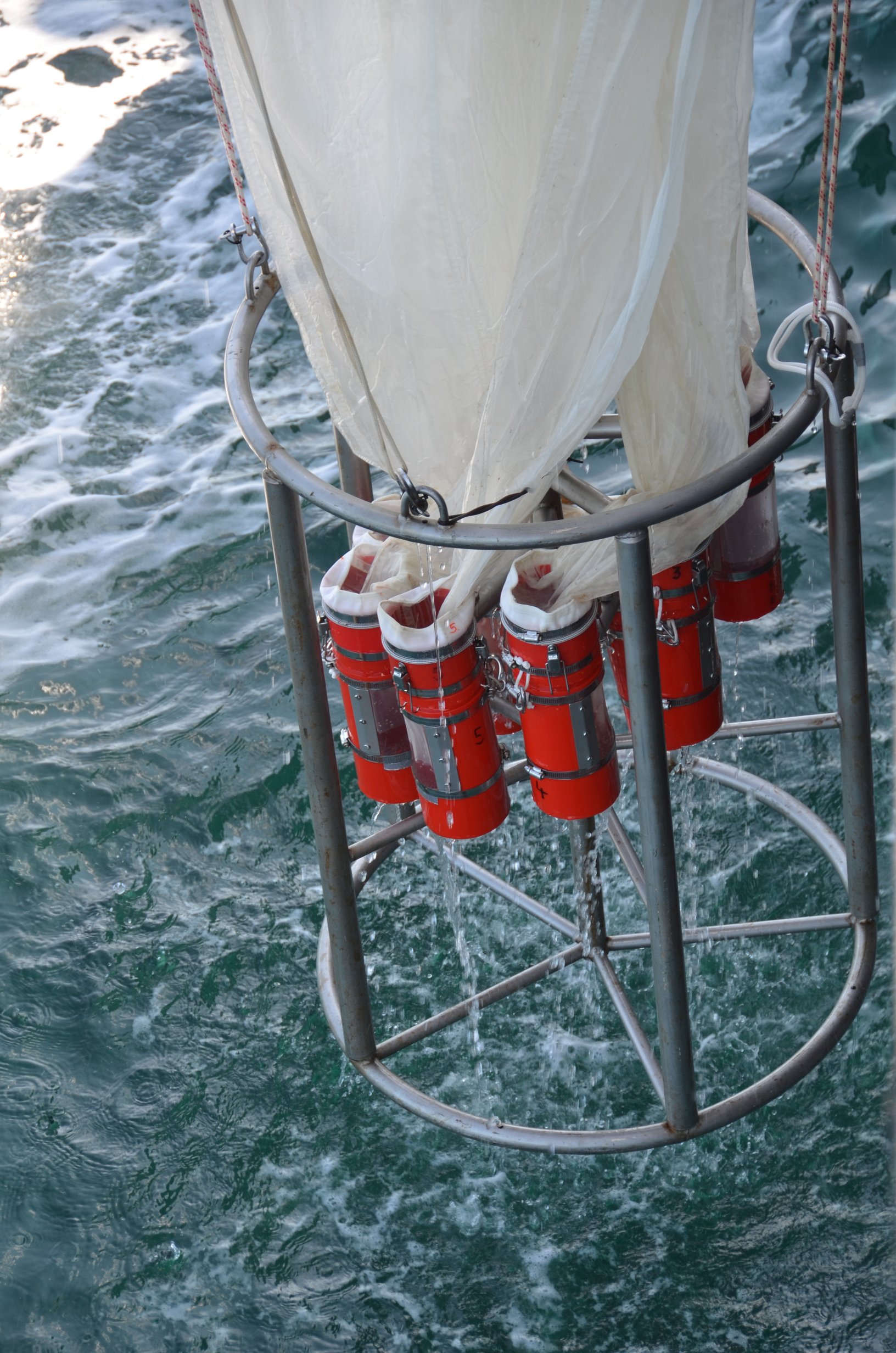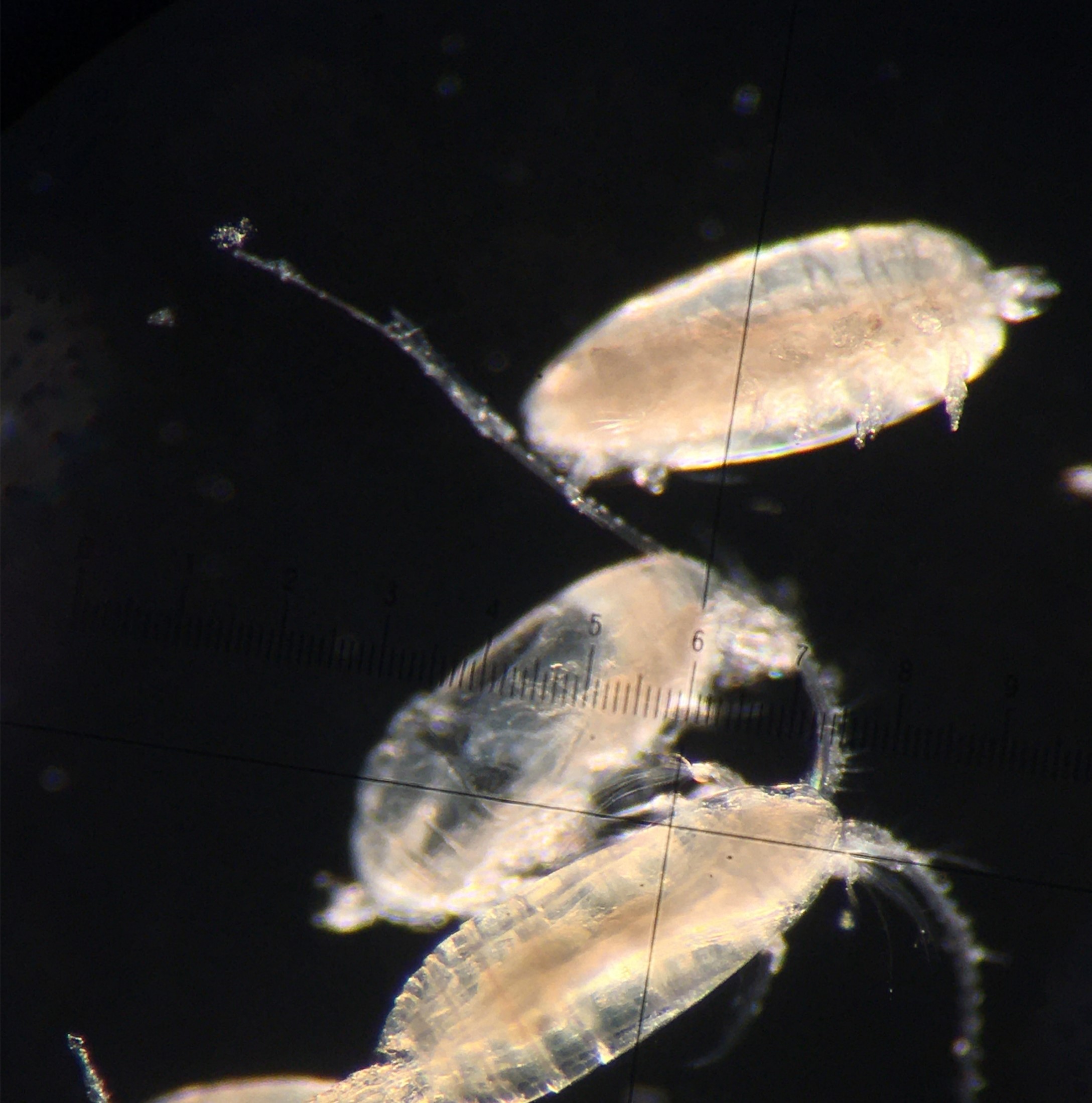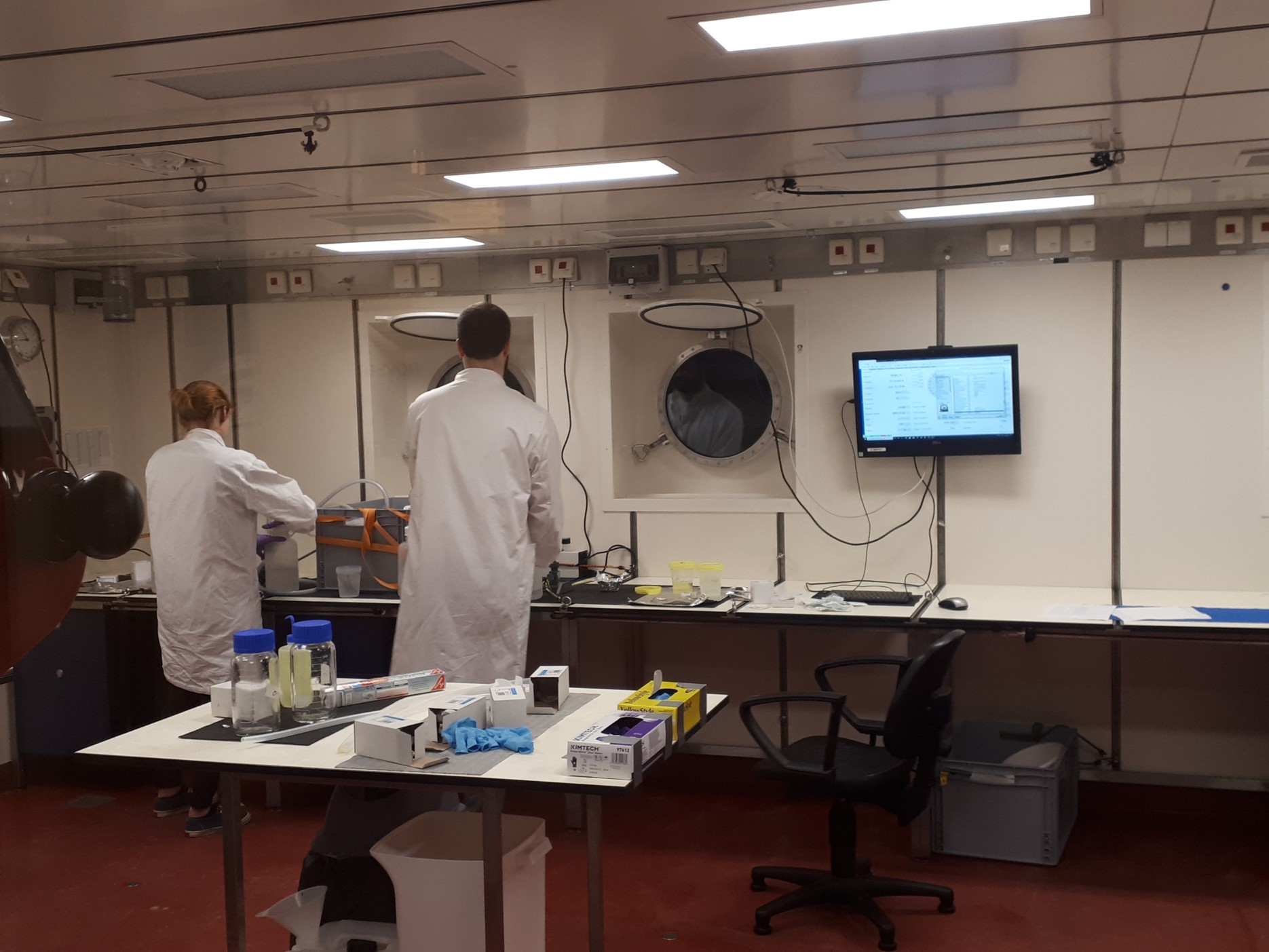The seen and the unseen
On this expedition, we are trying to find out which animals live in the water between us and the seabed. We are concentrating on what is known as “zooplankton”. This includes all animals that cannot fight currents and mostly drift in the water. Zooplankton includes jellyfish, shrimps, sea butterflies, and above all copepods. These are one of the largest groups of animals on Earth, and accordingly play an important role in the marine ecosystem.
To find out which animals live in the water, we look for visible and invisible traces. To do this, we use what is known as a multi-closure net or “multinet” for short. This is a huge device with a total of 9 nets that we can close individually from the ship. This enables us to separate different layers in the water, and see how the species composition differs at different depths. These are then the visible traces.
At the same time, we look for clues that are not visible to the naked eye or even with a microscope. In this case, we look for DNA traces called eDNA (environmental DNA). These are molecular traces of animals that are still in the water, even though the animals themselves are already somewhere else. These can come from skin particles, eggs, sperm or excrement. These DNA traces are later analysed in the laboratory to find out which species live there in the water. This is like deep-sea forensics, as every organism leaves a DNA trace that we can spot.
Through this expedition, we hope to shed light on the dark depths of the North Pacific and identify the animals by their visible and invisible traces.
